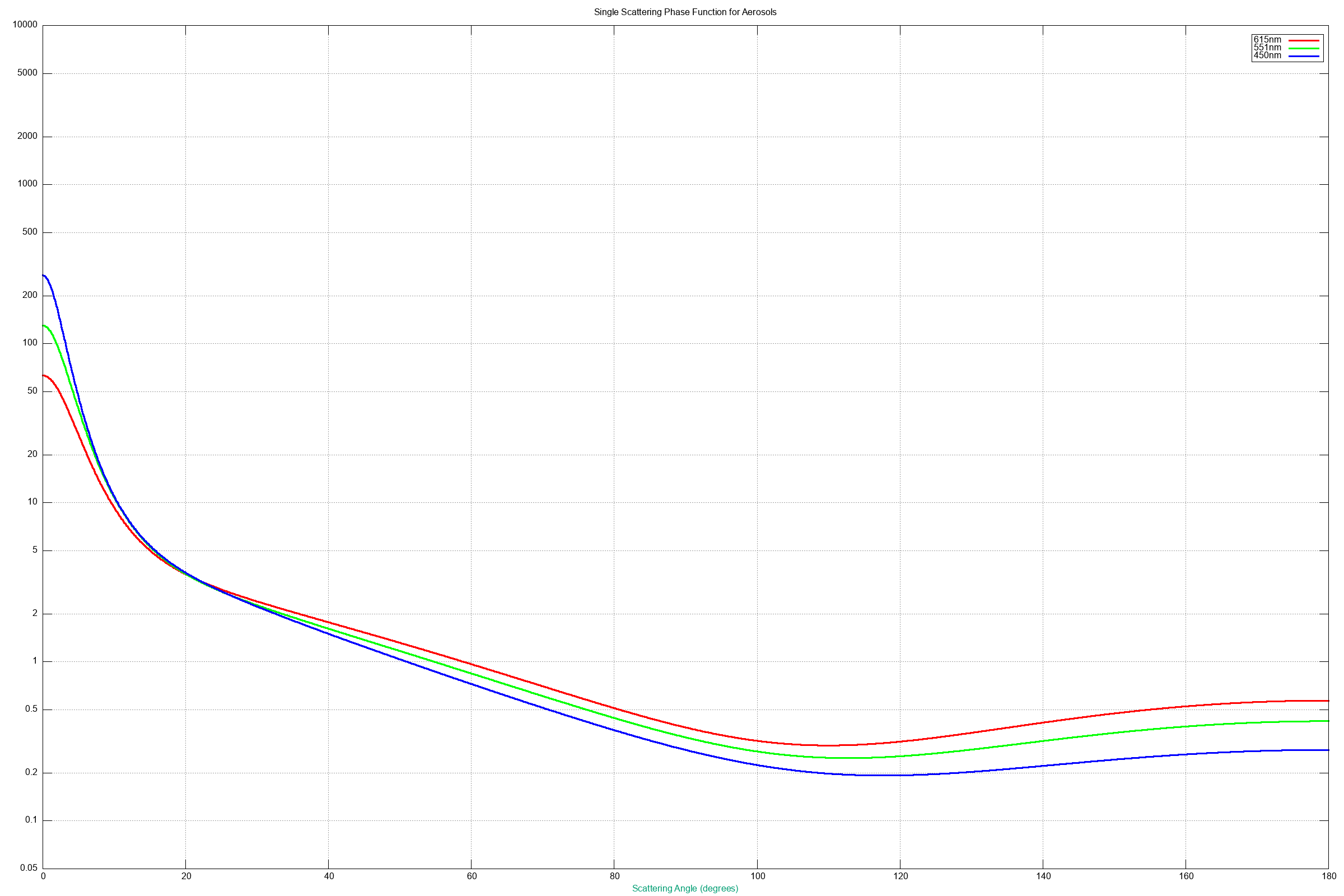Monte Carlo version (updated July 2023)

I can report on some progress with a Monte Carlo planetary atmosphere simulation program.
Here is a
Monte Carlo sequence of frames
.
Please note that the image frame directory links on this page contain both 8-bit and 16-bit images every 2 degrees of solar elevation. The 16-bit images have extended dynamic range to prevent loss of detail due to bright/dark saturation. They may appear dark in a standard browser, though can be rescaled with the right software to reside in the brightness range of interest.
Optical properties are assumed for the phase function and single scattering albedo. The phase function is shown for 615nm, 551nm, and 450nm in the plot below. The single scattering albedos at these three wavelengths are 0.922, 0.797, and 0.690. Aerosol optical depth is 0.40.
Most of the sky has a slight strawberry or butterscotch color. Very close to the sun the color becomes more neutral or bluish. This happens at sunrise/sunset and also throughout the day. In the 8-bit frames the color change near the sun is difficult to see due to saturation, though can be noted in the 16-bit images.

By comparison, aerosols on Earth can also look bluish very near the sun due to the size parameter variation with wavelength and associated sharper forward scattering peak. However this isn't too noticeable when superimposed on the blue sky of Rayleigh scattering by air molecules. It can also be difficult to (safely) view the colors of the bright forward scattering right next to the sun. Sunsets are different for additional reasons related to the sunlight reddening effects of Rayleigh extinction.
Steve Albers Home Page



